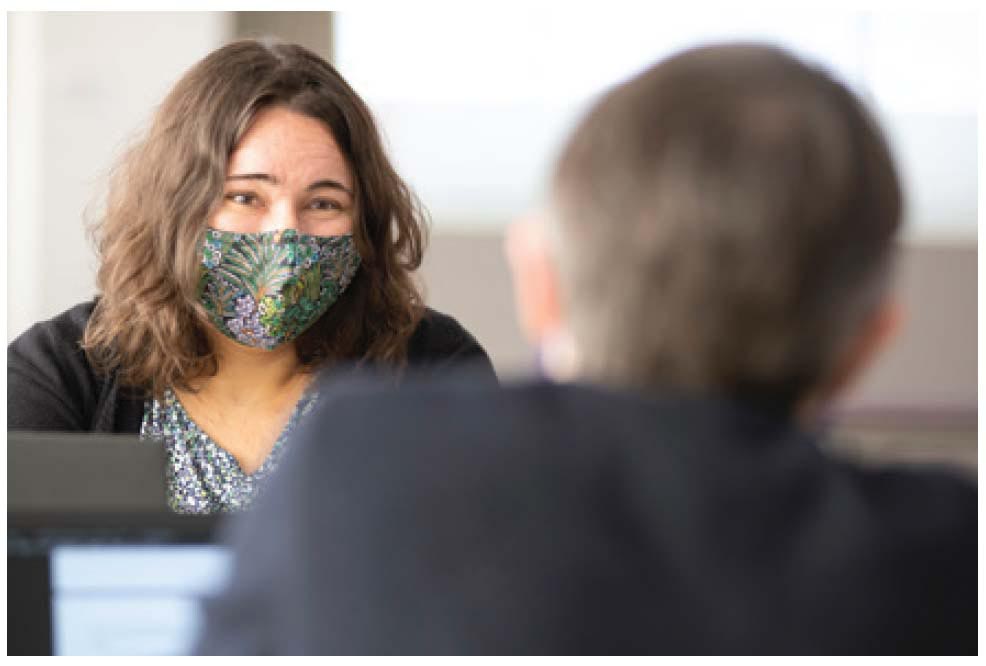Becoming More Inclusive Internally for All Students
UW Continuum College has ramped up their diversity, equity and inclusion (DEI) efforts by establishing internal DEI workgroups to create opportunities for staff to get involved. The best part is many of these groups also have a tangible impact on student issues.
The idea the DEI committee has been working with is that when efforts are internal, they’ll impact the students indirectly by impacting the staff.
— Sarah Cohen, Senior Instructional Designer, Continuum College
THE PROBLEM
The last 20 months or more were emotionally and psychologically taxing for many people. In addition to the unease surrounding the pandemic, national events brought to light the many inequities and exclusionary practices in our society.
These events inspired many UW Continuum College staff to want to create a better environment for all people and there was a surge of interest in diversity, equity and inclusion activities in the workplace. It became apparent that UW Continuum
College’s existing DEI committee needed to reorganize to accommodate the growing interest and take on a more ambitious range of projects.
HOW THE TEAM SOLVED
In the summer of 2020, with new co-leads Sarah Cohen, a senior instructional designer, and Taz Dickerson, a human resources manager, the DEI committee developed five sub-committees, each dedicated to a topic area identified as important on an organization-wide survey:
CHANGE CHAMPIONS: Specialize in looking at ways to help create systemic change in our organization, especially around decision-making and processes.
LEARNING AND ENGAGEMENT: In charge of educating staff and creating opportunities for learning more about diversity, equity and inclusion.
COMMUNITY PARTNERSHIPS: Manages anything external, such as relations with the larger community.
HIRING AND RETENTION: Supports HR, welcomes new employees and thinks about diversifying our staff as well as retaining a diverse team.
ACCESSIBILITY: Dedicated to working on improving accessibility for students and staff with disabilities.
We’re working toward having DEI not be a set of separate activities, but something that's considered, celebrated and part of all of our work.
— Sarah Cohen, Senior Instructional Designer, Continuum College
THE OUTCOME
All told, the DEI committee comprises 30 members of the UW Continuum College staff. “We’re individual or small groups of employees trying to create change in any way we can with the resources available to us,” says Cohen. “It's been interesting because these efforts have been working in parallel with DEI efforts that are happening outside of the committee.”
For instance, in the past year, the issues around accessibility have become more central. The Accessibility Committee has been working in concert with other teams in UW Continuum College to participate in the Washington State Audio Description Project. This makes instructional videos more accessible to visually impaired students by adding audio descriptions along with closed captioning.
“The advocacy of this committee is also raising awareness of Canvas's capability to provide an accessibility score,” adds Cohen. “This will help instructors and program managers understand how to use that score and improve the accessibility of their Canvas courses for students.”

Meanwhile, the Learning and Engagement Committee is collaborating internally with the UW Continuum College staff. The committee’s created a structure where staff discusses different DEI issues with partners every month, which ultimately trickles down to the student experience.
“The idea the DEI committee has been working with is that when efforts are internal, they’ll impact the students indirectly by impacting the staff,” says Cohen. “Staff who are more aware of the experiences of students from different backgrounds will be able to make better decisions.”
In addition, the Change Champions Committee is rolling out an Equitable Decision-Making Guide, which is a document that teams can follow to consider equity when they're making decisions.
“Many people make decisions all the time that have an impact on the student experience. And we don't always know how to make an equity-informed decision,” Cohen says. “This tool is a way to slow down and consider different perspectives that aren’t always part of the decision-making process.”
For example, the tool could be used for instructional policies around late work and deadlines. Students from different backgrounds might experience those deadlines very differently, impacting their success or failure in a program.
“The goal is for DEI to integrate into everything we do,” says Cohen. “We’re working toward having DEI not be a set of separate activities, but something that's considered, celebrated and part of all of our work.”
